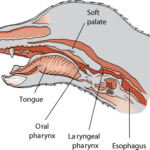What Paint Is Safe For Dogs Paws
Dogs are man’s best friend, and we want to keep them safe from harm. One way to do this is by being mindful of the products we use around them. If you’re a dog owner, you may have wondered about which paint is safe for your furry companion’s paws. After all, dogs are known to lick their paws, which means that anything on them can end up in their system. In this article, we’ll explore what paint is safe for dogs’ paws.
Why You Should Care About What Paint You Use Around Your Dog
Before we delve into which paints are safe for dogs’ paws, let’s first talk about why it matters. Dogs are curious creatures, and they explore their environment with their noses and mouths. This means that if they come into contact with something toxic, they can easily ingest it.
Paints contain chemicals that can be harmful to dogs. For example, some paints contain lead, which can cause lead poisoning if ingested. Other paints may contain solvents or volatile organic compounds (VOCs), which can cause respiratory problems in dogs.
In addition to the health risks, using the wrong paint around your dog can also damage their paw pads. Some paints can be abrasive or corrosive, leading to irritation or even burns on your dog’s sensitive paw pads.
What Paint Is Safe for Dogs’ Paws?
Now that we’ve established why it’s important to use the right paint around your dog let’s talk about which paints are safe for their paws. The good news is that there are several options available.
1) Water-Based Paints
Water-based paints are a safer option compared to oil-based paints because they have lower levels of VOCs and fewer toxic chemicals. They also dry faster and produce less odor than oil-based paints. When using water-based paints around your dog, ensure proper ventilation in the area where you’re painting and allow enough time for the paint to dry before allowing your dog back into the room.
2) Natural Paints
Natural paints are made from non-toxic, biodegradable ingredients such as clay, chalk, and plant extracts. They do not contain harmful chemicals or VOCs, making them a safe option for dogs’ paws. However, natural paints may not be as durable as other types of paint and may need more frequent touch-ups.
3) Milk Paint
Milk paint is another natural alternative that is safe for dogs’ paws. It’s made from milk protein (casein), lime, clay, and natural pigments. It doesn’t contain VOCs or toxic chemicals and has a low odor. Milk paint is also easy to apply and dries quickly. However, it may not be as durable as other types of paint and may require more maintenance.
Other Tips to Keep Your Dog Safe When Painting
Apart from using the right type of paint around your dog, there are other measures you can take to ensure their safety when painting. Here are some tips:
1) Keep Your Dog Away from the Area Being Painted
The best way to keep your dog safe when painting is by keeping them away from the area being painted. This will prevent them from inhaling any fumes or getting any paint on their fur or paws.
2) Ventilate the Room
Ensure that the room where you’re painting is well-ventilated by opening windows or using fans. This will help to reduce any fumes or odors in the air.
3) Use Protective Gear
Wear protective gear such as gloves and a mask when painting to minimize your exposure to toxic chemicals. You should also cover any surfaces that your dog may come into contact with during painting.
Conclusion
In conclusion, it’s important to use the right type of paint around your dog to ensure their safety. Water-based paints, natural paints, and milk paint are all safe options for dogs’ paws. Additionally, it’s important to take other measures such as keeping your dog away from the area being painted, ventilating the room, and using protective gear when painting. By following these tips, you can ensure that your furry friend stays safe while you beautify your home.



